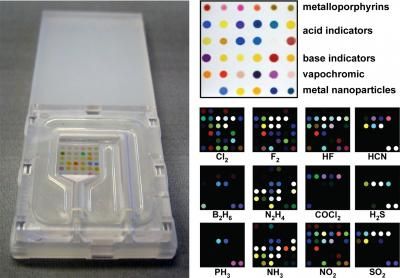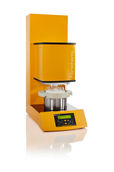'Refinery dust' reveals clues about local polluters, UH-led research team says
Investigators seek better understanding of fine particulate matter found in Houston region’s emissions
Cloaked in the clouds of emissions and exhaust that hang over the city are clues that lead back to the polluting culprits, and a research team led by the University of Houston is hot on their trails. Investigator Shankar Chellam is heading up the case, which hinges on unique identifiers found in fine particulate matter, a mixture of organic, inorganic or metal material. This material is given off by natural sources, such as sea spray and grassfires, and manmade sources, such as vehicles and industrial operations, and then suspended in the air.
"Fine particulate matter is tiny – about 30 times smaller in diameter than a human hair – but it carries in it a lot of information about where it came from," explains Chellam, a civil and environmental engineering professor at UH's Cullen College of Engineering.
Like any good detective, Chellam has enlisted a team with varying expertise, including urban air quality expert Matthew Fraser of Arizona State University, UH doctoral students of engineering and a NASA scientist. When their investigation started six years ago, Chellam says, the team was surprised, "maybe naively," that most research at the time focused on ozone, which is formed when emissions mix with sunlight. Much less attention was paid to airborne particulate matter in the Houston area.
"Most previous studies have been concerned with gases, particularly ozone," Chellam explains. "It is the particulate matter – both fine matter that is smaller than 2.5 micrometers and coarse matter that is larger than 2.5 micrometers, but smaller than 10 micrometers – that we are interested in."
Chellam says identifying pollution sources – even if only by industry or machine type, rather than individual factory or operator – is a public safety issue, because fine particulate matter is easily absorbed by the lungs and enters the bloodstream. Scientists are only beginning to understand the biochemical basis of how airborne fine and coarse particulate matter and its individual components affect human health, he says.
"Studies show that people living close to highways and refineries are more likely to become seriously ill," says Chellam. "The point of our work is not to specifically identify the individual polluting refineries, necessarily, but to estimate the overall impacts of `catalytic cracking' operations on local particulate matter levels. Also, maybe our findings will one day help toxicologists and epidemiologists determine the risk posed by these metallic elements found in the fine and coarse particles toward humans."
Chemists long have used the process known as "cracking" to break the carbon-carbon bonds in complex organic molecules (such as heavy hydrocarbons) into simpler molecules (such as light hydrocarbons.) Today, most refineries introduce catalysts, usually enriched in rare earth elements, during the cracking process to more efficiently produce gasoline with higher octane ratings. While industrial pollution sources and vehicles are equipped with filters to reduce emissions during normal operations, those filters are not perfect, Chellam says, and they aren't of any use when episodic, or accidental, emissions occur at refineries.
"The fact that we can quantify very minute concentrations of the catalyst material in the ambient air, as well as many other metals, shows the strengths of the analytical procedures developed at UH," Fraser says. "This allows us to track emissions from a source to communities far downwind, where people may be unaware that they are being exposed to emissions from industrial refineries."
Fraser said the team's goal is to advance the understanding of the science of air pollution so that more effective and efficient environmental regulations can be written. That's why the team, with funding from the Texas Air Research Center and the Environmental Protection Agency and assistance from engineers from the Texas Commission on Environmental Quality and Bureau of Air Quality Houston, began investigating what Chellam calls "refinery dust," which is created by both planned and unplanned emissions. The heavier dust particles emitted settle around refineries; whereas the fine particles are transported over longer distances. The long-term challenge for the researchers is to identify the many types of catalysts in air pollution samples, Chellam says, and then trace them back their sources.
For Chellam's team, the traces of metal found in air pollution samples are like the traces of DNA found at a crime scene.
"While organics occur in much larger concentrations in the air samples, they have been changed from their original state by chemical reactions that take place in the atmosphere, making it harder to identify where they come from," Chellam explains. "Metals, by and large, don't react away."
So, the team developed novel detection techniques for lanthanoids and other transition metals of interest, using a highly sensitive technique based on microwave-assisted acid extraction and inductively coupled plasma mass spectrometry (ICP-MS). NASA scientist David Mittlefehldt independently verified the accuracy of the team's ICP-MS measurements using instrumental neutron activation analysis.
These products might interest you
See the theme worlds for related content
Topic World Mass Spectrometry
Mass spectrometry enables us to detect and identify molecules and reveal their structure. Whether in chemistry, biochemistry or forensics - mass spectrometry opens up unexpected insights into the composition of our world. Immerse yourself in the fascinating world of mass spectrometry!

Topic World Mass Spectrometry
Mass spectrometry enables us to detect and identify molecules and reveal their structure. Whether in chemistry, biochemistry or forensics - mass spectrometry opens up unexpected insights into the composition of our world. Immerse yourself in the fascinating world of mass spectrometry!





























































